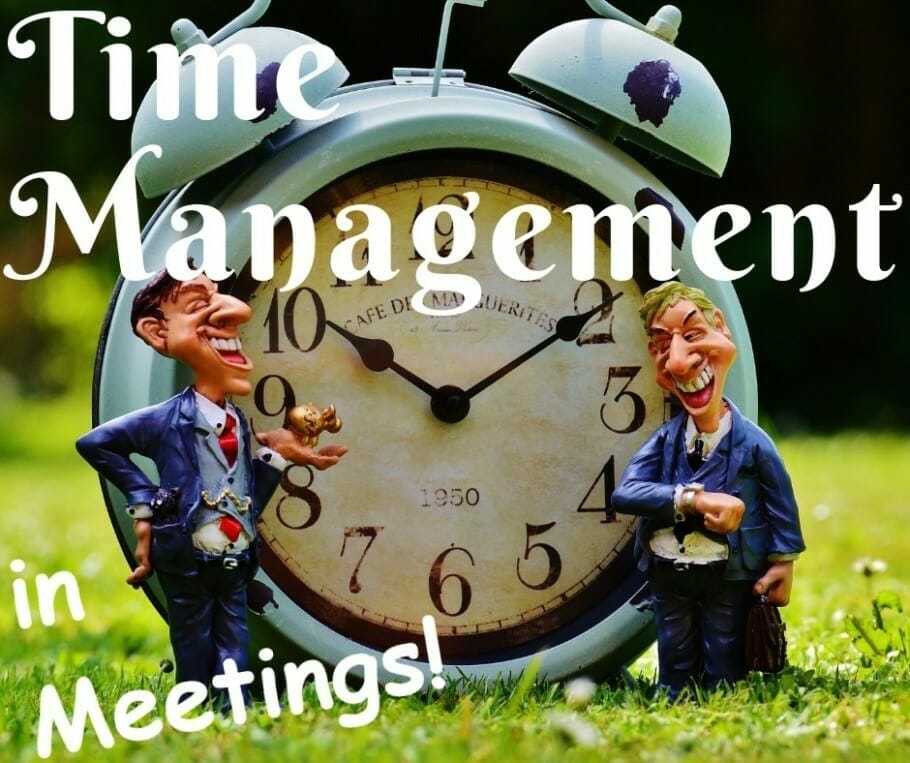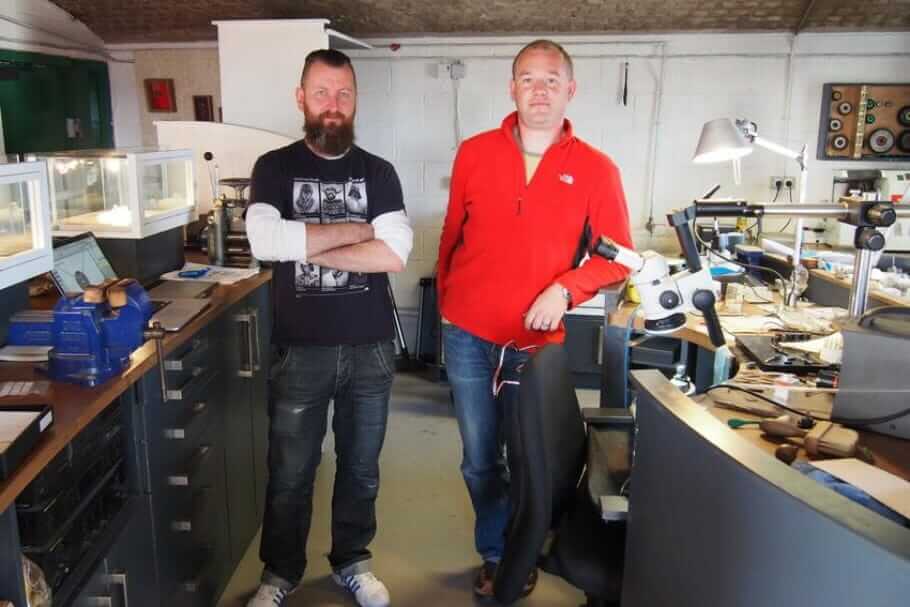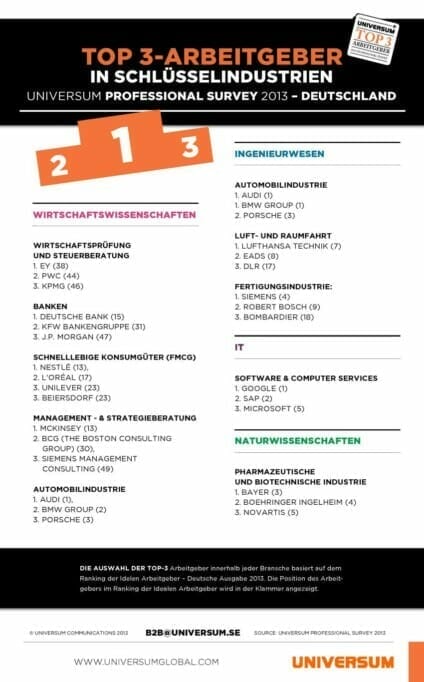For their successful, good life Information you really need: Government-funded publisher, awarded the Global Business Award as Publisher of the Year: Books, Shops, data-driven AI-Services. Print and online publications as well as the latest technology go hand in hand - with over 20 years of experience, partners like this Federal Ministry of Education, customers like Samsung, DELL, Telekom or universities. behind it Simone Janson, referenced in ARD, FAZ, ZEIT, WELT, Wikipedia.
Disclosure & Copyright: Artwork created and licensed with Canva.
An overview of efficient meetings: Prepare properly, communicate, argue [20 checklists & 10 tips]
By Simone Janson (More) • Last updated on October 17.11.2023, XNUMX • First published on 02.01.2019/XNUMX/XNUMX • So far 5397 readers, 1120 social media shares Likes & Reviews (5 / 5) • Read & write comments
Meetings offer the best opportunity to shine in front of others and thus significantly improve your own career opportunities. Unfortunately, this opportunity is often wasted. With a good one Preparation, skillful arguments and a portion quick-wittedness convince colleagues and superiors of yours Competencies.

- Optimally preparing meetings for argumentative reasons
- How to find out about the meeting
- Checklist: What does the invitation about the meeting reveal?
- Set yourself concrete goals
- Checklist: Skilled Arguing in Meetings
- Prepare yourself in a short time content
- Someone else researched for you
- So you will quickly find suitable information with your own archive
- 10 Tips: Targeted information gathering
- Build up a convincing argument
- Make a good start
- As you skillfully convince in the main part of your argumentation
- The conclusion of your argument - so your contribution remains in the mind
- This is a safe way to start your meeting
- Indirect moderation
- The best questioning techniques and when to use them in the meeting
- If your boss undermines the success of the meeting
- Checklist: Get through arguments!
- If you really need time
- Gain time - that's how it works
- Checklist: Your conversation in the meeting
- Why common decisions make sense
- Checklist: decision-making in the meeting
- Do a problem reading
- Define the decision goal
- Find alternatives together
- The implementation of your decision
Optimally preparing meetings for argumentative reasons
Every Thursday afternoon at 15 p.m. Mr. P. has a team leader meeting. That Objective: The team leaders should exchange ideas and get an impression of the work of the other departments. It looks like everyone throws in anything that occurs to them and a few participants say something about it.
At some point - the end is usually open, so nobody knows exactly when - the moderator ends the meeting. Mr. P. is happy to get back to his desk because he feels these meetings are a complete waste of time. He can use them effectively for his Career use: He would only have to prepare himself optimally so that he can present his work convincingly. That's just a typical meeting: unclear reason, unmotivated participants.
How to find out about the meeting
Bring the meeting in the best possible preparation - even as a participant. Even as a simple participant, you can advance the meeting by asking questions or constructive suggestions without stepping on the moderator's feet. If the meeting does not have a moderator: Offer to host the moderator yourself.
For a targeted preparation you need all the important information. Ask specifically for them if they are not already on the invitation. Interest makes a positive impression, especially with superiors. If you invite yourself, you must of course inform the others. List all information in detail. The overview will help you ideas collect for your argument.
Checklist: What does the invitation about the meeting reveal?
The invitation you received to the meeting reveals a lot that you need to know.
- What is the theme of the meeting, what is it about? How exactly does the agenda look? How much time is available to each participant to present their own ideas?
- What is the goal of the meeting, what should be the result? Are ideas, results or the like only presented or should decisions be made and solutions be sought?
- Is there a moderator? Who is hosting the meeting?
- How many people participate? Who participates? Do the participants know each other? What are the participants' previous knowledge? Is the knowledge heterogeneous or homogeneous?
- Is participation voluntary or obligatory? Is the date suitable for you and other participants?
- When exactly does the meeting begin? When does it end? How many breaks should take place? (Important: a fixed time frame)
- Where does the meeting take place? How is the room equipped (lighting, temperature, tables, seating, catering, etc.) What is the technical equipment of the room (flipchart, beamer, projector, etc.)
Set yourself concrete goals
Don't just think about your personal goals: A meeting always means that you act together with others and find solutions. Try to reconcile personal and common goals as much as possible. For example, Mr. P. defines the common goal for the next team leader meeting as Companies save and everyone has to help. His personal goal: to be Team should suffer as little as possible from the savings.
You should define goals concretely. If you put your goals in writing, positively and as concretely as possible, you will have an ideal starting point for your argument. Wrong: "I want my team to save a little." Correct: "I want my team to save in a maximum of two areas."
Checklist: Skilled Arguing in Meetings
Always keep your goal in mind Eye. Use the following tips to clarify the goals of the meeting. When you know what you want, it's much easier to come up with the right argument because you've clearly defined your point of view.
First deal with the common goals. Write these down as concrete as possible:
- What are the views of the different participants? What wishes and needs do you have? What are the goals and interests behind it?
- What results do all or most of them get the maximum benefit from? What could a result look like that everyone is happy with?
Then make your own goals clear. Formulate here again exactly. The overview is of course only for you and does not suit anyone.
- What do you wish? What are your wishes and needs? What would you benefit from?
- Which result would you be most happy about? Or: What do not you want? What would you be angry about?
If your personal interests are in conflict with everyone's common interests, ask yourself, what is an acceptable compromise for you? And which result could you accept in any case? Clearly set your limits for yourself.
Prepare yourself in a short time content
Save time by researching facts purposefully. Not every meeting also covers your area of expertise, where you can shine. Nevertheless, familiarize yourself with the facts, so that you can contribute something sensible to the topic. Save valuable time by narrowing down the mass of information from the outset with a specific question - as close as possible. Only on precise questions you will get accurate answers.
Create a table. Formulate a specific question in the first column, and in the second column, evaluate how important this question is. With this information you start, only if you have time later, you also take the others. Finally, in column three, write where you find the information.
Someone else researched for you
If you do not have time to do the research yourself, you can ask someone else for it. Pay particular attention here to specific questions and instructions, so that the result is also usable for you.
Mr P. would like to make suggestions on how the company can save and at the same time be armed with facts and arguments when other team leaders suggest saving in his team. The question "How can I best save?" does not get him any further, it is too vague. Instead, he thinks about various alternatives and asks specific questions about each. In the end, thanks to his overview, he knows exactly what he is looking for and where to start.
| Examples of exact questions | Where can I find the information? | Important? |
| How did other departments save? | Experiences of colleagues ,. Numbers from the company | Important |
| What effect does saving have on the motivation of the colleagues? | Experiences of colleagues ,. Numbers and material from the company | Not so important |
| Does saving affect the quality of work? Are there any numbers? | Experience and figures from the company, scientific studies (Internet) | Important |
| Does a quality loss affect the total sales of the company? Are there any numbers? | Sales figures from accounting; Experiences of comparable companies (press reports and internet) | Very important |
So you will quickly find suitable information with your own archive
Surely you also know some topics that are real long-time favorites. So you do not have to research each time: Create your own archive for specific topics, which you maintain in between times.
Everything you find on the subject belongs to the archive. It is important that you keep the archive neat, alphabetical and always up-to-date - because you always want to find current information in it and you have to be able to rely on it. There is no limit to the information you collect.
10 Tips: Targeted information gathering
Do not pile up random documents ... Because: clearly sorted material is easier to find! Therefore, please note the following 10 tips:
- Fast information from the internet is popular, but not always high quality. You can also use libraries or the archives of magazines and newspapers - here you can search with keywords.
- Whether articles from magazines and newspapers, copies from books or statistical material: always state the author, the full title of the publication medium and the article, the place and date of publication. In this way, the knowledge of the source and date is still available years later.
- Use your own or other experiences and conversations -. Such subjective facts are helpful if you want to argue emotionally or give examples. Make a note of what happened to you or others, what ideas and impressions you had and in what context.
- Collect everything, texts, pictures, graphics or sound material (eg as MP3). These can support your reasoning.
- Use the Internet to search for all information specifically.
- For example, if you search for multiple terms in Google, put them in quotation marks, for example: “save money”, this will lead to all hits that contain both words and then to hits that contain only one or the other.
- If a term is unknown, put an asterisk in its place
- If you want to exclude individual terms, put a minus sign in front of the corresponding word
- If you only search for German-language information, just go to the German site of the corresponding search engine or click on the corresponding option.
- If you are looking for images, you can search for them specifically on Google by clicking on the "Images" option and entering a search term.
Build up a convincing argument
Write down your arguments - best in a nutshell, so that you can rely on them in the meeting, but not in danger of reading. Their argument, no matter how brief, should consist of three parts:
Before the meeting: Fix your reasoning in writing, so you always have them at hand.
Make a good start
Brevity is the soul of wit. Talk about the essentials right away, don't waste time with well-known banalities like "We've come together here to talk about the austerity constraints in the Company to discuss." You need to get the audience interested in your speech from the start so that they listen and constructive think along.
The don'ts
- Do not go into self-praise: that makes us unappealing
- Do not talk about what you want and what works for you
- Do not base your arguments on criticism of others
The do's
- Be brief, precise and polite
- Always assume in your argumentation: what do the others have? What is she interested in?
- Formulate positively and constructively
- As a courtesy: greet the participants and - if the others do not know you - introduce yourself.
- Address the participants directly and personally, for example: "I greet you, Ms. G. and Mr. W."
- Then, first of all, point out your competencies and make it very brief, preferably only in a subordinate clause, what qualifies you for the following argument, for example: “As the head of accounting, I have a good overview of which departments work efficiently and which could save. "
- Briefly outline the focus of your argument, without revealing too much, for example: “I would like to briefly introduce you to an innovative concept with which the company saves 13% of the costs without incurring disadvantages”. This will arouse curiosity and build tension and interest.
- Explain briefly what brought your idea - such as a personal experience. To bring the human factor into the objective idea.
- Be brief: you only have a limited speaking time!
As you skillfully convince in the main part of your argumentation
Your introductory announcements must now be followed by something similar, because you do not want to make empty promises. How to convince others:
Checklist: The benefit for the listener
- Emphasize the benefits that others will get from your idea, including emotionally. Feel free to paint these advantages. Example: “My department makes a significant contribution to the company's turnover, and that is an advantage for all of us”. On the other hand, talk little about your own advantages.
- Point out why this idea is really new and will improve everyone's work, such as: "If we restructure some departments, it will all make us work more efficiently."
Checklist: Positive and constructive
- Always be positive. For example, always mention the effort your idea causes in connection with the result: "The restructuring costs time at first, but in the medium term it saves us a lot of time and money."
- Convince with arguments, not by criticizing others. If you do have to criticize: Be constructive and formulate positively, not destructively. Example: “The advertising department could work a little more effectively. Maybe we could think about what to do together. "
- Underpin the arguments with numbers and facts, illustrate the result with examples.
- Support also shorter speeches with appropriate presentation media.
- Even with the simplest means, you can underlay your speech visually.
- The essentials in brief.
The conclusion of your argument - so your contribution remains in the mind
What was last heard stays in one's mind the longest. With a grand finale you will ensure that your speech remains in positive memory.
Checklist: Summarize your theses
- Summarize your most important theses again: “I have now presented my two ideas for saving”.
- Draw a conclusion
- Briefly explain what you plan to do next: "If my idea is accepted, I can research some additional information by next week."
- Ask the participants for feedback: "I would be happy to receive a short response."
Checklist: feedback and appeal
- If the point is that a decision should be made, then end your contribution with an appeal: "I have now presented my idea to you, if I have convinced you, then vote for it."
- Thank the audience for their attention. This may sound banal, but gives you additional sympathy points.
This is a safe way to start your meeting
In the meeting, you have to implement your prepared argumentation optimally. But: You will rarely succeed in exactly this way. Even Mr. P. team leader colleagues do not listen patiently to his arguments until the end. When it comes to the main argument, his colleague F. cuts him off with the statement “this idea cannot be implemented like this!” the word off. But Mr. P. can bring his argument to a quick-witted conclusion.
That way, you remain confident when your speech is criticized
Unlike one Presentation in the meeting you are usually just one of many participants without special status. Therefore, you probably fall fast into the word.
"We" instead of "I"
Do not speak in the first person. That quickly works like a justification. Speak from the whole group: "We should ..." - this will bring you into an open, constructive and inquiring attitude. "
No pros and cons dialogue
The first impulse in this situation is usually defense: “But I think this idea is useful, because according to my calculation it results in significant savings.”
However, anyone who gets involved in such a game of pros and cons is automatically in a weaker position because they have to justify themselves and soon find themselves in a dialogue in which every assertion is followed by a counter-assertion. However, the other meeting participants are left out and then either withdraw from the discussion or verlieren patience with the fighting cocks.
Questions instead of repartee
Do not hit back on steals and attacks! Rather, play the question-and-answer game. Respond constructively to objections and try to include all other participants as well, by asking your interlocutors to ask for more information and backgrounds. You can then supplement your own facts.
So you also succeed in questioning these deadlocked positions. Because: Mostly opinions are only incompletely justified, for example because they are based on a certain experience or because they are based on a general rule.
For example, colleague F. argues: “I have already tried something similar in my team and the whole team has worked very unproductively.” Only when Mr. P. asked around, colleague W. also spoke up: “Well, we have had very good experiences with this type of work, but there are also some points that did not go so well…” The constructive discussion can start.
Indirect moderation
With such questioning techniques you now indirectly take over the moderation and thus stand out from the other participants. If your "moderation" lasts only a short time and/or you are very skilful, it is not Problem.
But if it becomes a permanent condition and is noticed, other participants and especially the moderator could step on their toes feel. This is especially annoying when it's your manager. So don't overdo it, just give some food for thought.
Overall, do not hit big on the timpani, but quietly set the pace.
To stay objective
Even if questions are already defusing, it is important to also ensure that you remain objective. Do not imply that the other person is telling the untruth, for example by asking: “Was it really everyone involved?”. This quickly makes him feel attacked and you provoke another attack.
The best questioning techniques and when to use them in the meeting
Questioning techniques distract from you at first, so you don't have to defend your arguments. Then help you to find constructive solutions together in the group without anyone feeling offended. Questions are therefore the optimal Technology for a successful meeting. The situations in which you can use the questions are of course very different, but if you look closely you will find that the following three schemes are absolutely typical for meetings and can be used almost always:
Checklist: statement against statement
Another participant attacks your idea or your contribution by putting forward a counter-thesis, eg “That sounds good nice, but we have had different experiences with it…” Now there is statement against statement. Just ask whether the situation was described correctly:
- If the information is too vague, ask for clarification: “Who special?” "How exactly?" "All?" "How many percent?"
- If you want to know a little more, ask for more specific information: "Who was involved?" "Who was affected?" "Who was responsible?" "What happened?" "Would you like to tell us how that was actually?"
- Compare the new information of your interlocutor with known information to get a clearer picture: “In comparison to what?”
- Use an understanding question to distract from yourself in a rhetorical way and let the others explain: "Did I understand you correctly, you are saying that ..."
Checklist: Exaggerated Pessimism
One participant assesses the consequences of your suggestion much more negatively than you do yourself, something like this: “That sounds nice, but I believe that it will reduce productivity considerably.” Now you should find out whether the action actually leads to the expected consequences would or whether others are to be expected.
- Ask all participants to consider what other possible consequences there might be: "Have we considered all the consequences?" "What else can come of it?" "Are there alternatives?" "Have we forgotten something?"
- Exaggerate the possible consequences: "In the worst case, what can happen if we choose this option?" You are making it clear that it cannot get that bad and that the pessimists have hopelessly exaggerated.
- Ask for a reason: "Why is this solution the best?" Why is option 1 preferable to option 2? ”“ What are the reasons for rejecting this idea? ” Consciously ask this question to everyone, including yourself. You are making it clear that you are also thinking. If you just put yourself in front of others, they come from the "why?" into a compulsion to justify - that creates resistance!
- Deliberately lead the others into a dead end to make the absurdity of the fears clear: "What do we have to do to keep the problem alive?" "What can happen if we still don't solve the problem?" You also make it clear that it is better to act than to remain inactive - and have the laughs on your side.
Checklist: General Consensus
One participant attacks your remarks by referring to a general consensus: "That's nice, but we all know that this is far too idealistic: Nobody works more than they absolutely have to." The trick is simple: the majority is not wrong, something that everyone knows is virtually irrefutable. If you do, there's something wrong with them (at least that's how you feel) and you stand little chance of getting yours Opinions to justify. But is the general opinion actually correct? Make you think:
- Find out why a position is important to someone: "What is particularly important to you?" What is the focus here for you here? "
- Then ask how someone got their point of view: "What made you see the situation this way?"
- Break down the general perspective on individual cases by differentiating: “This applies to this case, but also applies to ..?”, “This action was appropriate there - but how is it in this context?”
- Invite the other participants to change their perspective: "If we look at it from the customer's perspective: How would he see it?" "How do you think our boss would react?"
- Check out the prerequisites and beliefs contained in an opinion in a naive-critical manner: “Hmm, what does it actually mean when you think idealistically?” "Since when did everyone know?" This will get the other participants to think. End rule
- Use your questions tactically as chess pieces. This allows you to react spontaneously to the statements of others.
If your boss undermines the success of the meeting
Even if your Executive uses the meeting primarily for self-portrayal, you can use the Success advance with specific questions. However, you have to be a little more careful here: Pack your questions behind great interest and give the boss the opportunity to shine with his skills. Don't try to impress him with suggestions of your own, rather make suggestions look like his own.
The Ms. G.'s reasoning, Mr. F. interjects: “That's nonsense! I would do it completely differently, namely like this..” But beware: Anyone who puts on such Costs someone else stages, quickly gambles away the sympathies of the other participants.
It is better, indirectly, but no less effective, in addition to his expertise Teamwork to prove. When doing so, think about the questioning techniques and how you should criticize colleagues. Mr P. is also not entirely convinced of Ms G.'s Concept, but waits until the colleague has finished. “It's a whole new perspective. I would be interested to know what the other colleagues think of it...” and he skilfully incorporates his own suggestions into the subsequent discussion.
Checklist: Get through arguments!
So you steer the discussion in calmer lines, when the meeting threatens to get out of hand
Sometimes you sit in the meeting and everyone is talking hotly about. You realize that this way the meeting will not bring any results. Even if you do not moderate yourself, you can use some casual remarks to steer the discussion back on a more peaceful path and structure it. Thus, the other participants come by themselves to continue the discussion constructively.
- Structure the conversation: "I suggest that we discuss this proposal first and then that."
- Try to bring everyone back together: "I'm interested in hearing other opinions on this subject so that we can get a more objective picture."
- Bring back to the topic by reminding you. Just ask "What are we talking about?"
- Test whether other participants understood what it was about: "Can you tell me how you understood colleague F.?"
- Repeat the course of the conversation - this will get the participants to concentrate again on the actual problem: "We actually discussed this proposal and then came to this question, from which the discussion arose ..."
- Summarize the important statements again: "We found out that ... and then found out that ..."
- Identify points of consensus and demonstrate the success of the meeting to the participants: “We have now reached an agreement”, “What did we achieve?”
- Defend your goals: If someone says something that runs counter to your own goals: Make the argument work by asking for accurate information and well-founded facts. If the other one is prepared for it, simply skilfully challenge the general consensus underlying such facts with the techniques outlined above.
If you really need time
If you can not think of anything, ask for a reprieve. Make it clear that you were thoroughly prepared for the topic but had started from a different issue. Make it clear that you do not just want to say something without knowing and having thought through the necessary background information.
Schedule postings
And schedule exactly when you want to submit your opinion - for example in the next meeting or today. Example: Mr. F. suggests savings in Mr. P.'s department. Mr. P. sees his position and asks Mr. F: “What exactly do you base your opinion on?” Mr F. then countered with an annual statistical report. Mr. P. remains calm: "But does this statistic also include the factor of employee productivity?" Mr. F. has to admit that he doesn't know. Mr P. has achieved his goal and upset the reasoning, which is apparently well supported by facts.
Time pressure: Gain more time
For most of the theses there are counter-theses, which can be just as well documented. Important: At the crucial moment, raise doubts about the unpleasant suggestion. But never attack it head-on. Mr. F. wants to gather more information by next week, but Mr. P. also has time to prepare. Always pay attention to the gestures and facial expressions of the other participants in the reactions.
Gain time - that's how it works
Even if you should make a statement unexpectedly, you have to buy time: "What do you think about that?" suddenly asks the boss. Mr. P. answers the question “Could you give me any further details on this subject? Then I can do a detailed elaboration by next week. ”Make sure that such counter-questions provoke an open answer that is worth thinking about.
The do's
- Get backing from authorities such as Study X or Expert Y.
- Use the little word "with it" to convey the benefit of your idea to others: "Restructure this department so that the company saves costs". The other person then has the impression that he only has to follow your suggestion in order to achieve his goal.
- Create sympathy through an appealing appearance, friendly demeanor and similarities to the others. If they find you sympathetic, follow them sooner.
- Pleas e ask your question! Open questions provide clarification, understanding and highlighting important issues. Then you cleverly weave your own suggestions into the discussion.
The don'ts
- No relativizations, e.g. by “actually”. That seems insecure and not convincing.
- Avoid frontal, direct or personal attacks and ironic remarks - respect misunderstanding! Do not profile yourself at the expense of others. This makes you look unsympathetic and quickly sidelined.
- Do not get involved in a pro and contra discussion and do not justify yourself - it will make you feel bad.
- Do not show if you have more idea than the moderator and do not criticize him openly. Both are snubbed at him.
- No closed questions: If the other person can only answer “yes” or “no”, the question immediately comes back as a boomerang.
- Show nerve strength when you respond to such a question with a pause. Your facial expressions and gestures also play an important role here. First of all, look for the eye contact of the person who addressed you. Silently, silently, keep quiet in your mind and count it down to three. Then break off the eye contact. This seems confident and shows that you make no ill-considered decisions, but strive for sound statements.
- You can also save time with a short comment: “Oh?”, “Oh what?”, “So?”, “Soso”, “Interesting”, “Moment”, “May be” or “Excuse me?” The little sentences are so meaningless that you can use your brain during this time to ponder an appropriate answer.
Checklist: Your conversation in the meeting
What is the optimal conversation style in the meeting? An overview:
- Better, you do not tactically strategize, it quickly seems fake. Tell me what you really think.
- Also, pay attention to what is said between the lines. For example, unspoken assumptions: “Another stupid suggestion from colleague G.”. You can also respond to these underlying assumptions (Ms. G. is incompetent) with questions.
- Avoid hypothetical speech, "You might assume that ..." That sounds like excuses.
- Explain your arguments in concrete experience and plastic examples. With abstract definitions you only create misunderstandings.
- Take up what the previous speaker said. That's how you signal that you want to work with the others in the team.
- Do not be distracted, but concentrate on the original topic, even if the discussion has moved away in the meantime.
- If you are asked for your opinion: Avoid too hasty determinations such as “It is perfectly clear that…”. In this way you only provoke emotional resistance from your interlocutors. Better: "I can well imagine that ..., but I need more information."
- Be brief: do not use more than seven short sentences for a conversation post. Studies show that many people can not remember more than seven sentences.
- Make decisions together: Take your interlocutor at their word. Make clear to him the logical and sometimes absurd consequences of his action: "How do you save where we can?" Your question: "You mean there is no more potential for savings?"
Why common decisions make sense
In many meetings you also have to make decisions. But decisions in the meeting don't have to be a tough tug-of-war. This takes time, but a group has a larger one Background and more experience than individuals and can look at a problem from different angles. There are many alternative solutions. In addition, everyone afterwards identifies with the solutions found and tries harder to find them Implementation, because they at the decision have taken responsibility.
For example, Mr P. and his colleagues want to work together decidewhere in the company savings can be made. Everyone can help the best through their expertise Alternatives to find. Everyone is affected by the decision. And afterwards everyone has to make sure in their team that the decision is actually implemented.
Checklist: decision-making in the meeting
No matter how far-reaching the decision or how difficult the problem, almost any decision making and problem solving during a meeting follows a certain pattern. And therefore you should always pay attention to the following points:
- Define the problem exactly. Develop goals for the problem situation in order to better evaluate the implementation.
- Make sure everyone gets all the information needed to make a decision.
- For any issues affecting the group, seek solutions together with the staff. Make it clear that the solution is important to everyone.
- Use creative techniques in your search for ideas. Look for the ideas first, but do not rate the suggestions yet.
- Make sure that everyone agrees to the decision - this is the only way to ensure implementation.
- To implement the decision, develop action plans and deadlines so that you can regularly monitor the status of implementation. End rules.
Do a problem reading
Describe the problem. A precise problem analysis is important because the problem affects everyone. Show the others why the problem is personal to everyone Significance is, for example: “Because of the fact that constantly from saving the Rede is, of course many have Employees Anxiety for your Workplace. "
Describe the problem very accurately, factually and neutrally. Avoid blame and blame others and do not paint the devil on the wall. This is the only way to avoid that other participants feel attacked and flee into a defensive posture or retreat sulkily. Both significantly disrupt the decision-making process.
Mr. P. addresses the problem directly: “The company has recently clear higher expenditure than had in previous years. Since this affects us all, we should find out together where we can save." He skilfully avoids pointing out possible causes that could lead to allegations.
Checklist: Return the symptoms to the actual problem
However, if you only tinker with the symptoms (e.g. the company gives too much Money off), you won't find a usable one Solution. It is better to look for the real reasons together. Collect the reasons together in an objective and neutral manner. why the problem arose. The best way to do this is to use the flipchart, for example:
- fewer customers
- more customers complain, thereby disturbing the workflow
- many employees are sick
- inefficient work in some departments
- poor communication between departments
- demotivated employees
- technical breakdowns
- new computer system and the necessary training period
- Restlessness through restructuring
- Split complex problems
Split up the problem
Split a complex problem into subproblems. Each participant in your meeting then deals with one aspect and researches causes and alternative solutions up to a certain point in time. This will help you to reach your goal faster in the team.
Recognize exchange effects
Also, analyze if the problems keep cropping up, or only in exceptional cases, and if certain problems are isolated. If several problems occur together, a total solution is appropriate. Find out which factors determine the problem and which relationships exist between the individual factors.
Checklist: Work with a problem network
If you want to solve complex problems together, the technique of the problem network rhetorically cleverly with the right questions helps you visually analyze the problem together, so that the contexts are clear to all. Use the flipchart here as well.
- If possible, design a problem network on the flipchart
- Write the problem in the middle of a paper and ask first why: Why did the problem arise? How did it come about?
- Then try to determine the interactions between the causes. Mark these interactions by arrows. Ask: What are the possible causes of the problem?
- After that, apply the same effects to procedures. Ask: How is the problem affecting you?
Define the decision goal
Determine what will be achieved by solving the problem. But also what should not come out of it in the end. These are the basis for tailor-made ideas and at the same time serve as a “yardstick” when evaluating suggestions. Example: To save money, the company could do without technical innovations or reduce the number of employees. However, the job would be done less well and quickly. That wouldn't be a good goal
The dont's
- No blame when analyzing the problem according to the motto: "Team A is responsible for this problem." As a result, other participants only pout and withdraw and refuse to cooperate.
- Avoid single-handed decisions: “I am convinced that this is the best solution”. Unfortunately this is not a team decision!
The Do's:
- Always make decisions with those who are also affected by the decision. This will help you avoid strife.
- Make use of expertise and the experience of various experts in complex decisions that take many aspects into account
Describe your goals positively and specifically. Tighten with the Objective the problem description unnecessarily. If you ask around like that forms "How can we handle the same amount of work with fewer employees", you have met two restrictions that unnecessarily limit the range of solution ideas. Maybe the company doesn't have to save on employees at all and maybe it's not just about creating the workload.
Everyone involved in the decision must be sufficiently informed. But the Art consists in selecting the information and finding out and passing on all information relevant to the decision, but in detail without any evaluation or restrictions. How to filter out this relevant information.
Find alternatives together
Together you are strong, The best solutions come when all participants bring their thoughts and the different ideas are combined (if all are ready to share their experiences).
So use techniques that creativity activate in the group. ´In the event that the discussion gets out of hand, use tips for conducting conversations and discussions as well as conflict resolution.
Brainwriting
Is this alternative possible? What possibilities are there to change the situation? Where are there restrictions? Involve such questions in the discussion and evaluation of alternatives always .. A solution that is not feasible under the given conditions, you benefit little.
With this Method At the same time, you will receive numerous interlinked and already well thought-out solution proposals. Each participant creates a table with three columns and one row for each participant on a piece of paper. Example: with 10 participants, each table has 10 rows, with 20 there are 20, etc. Everyone writes a basic idea in the first row in each box, making a total of three ideas and passes the sheet on. The next person writes possible variations of the basic idea in the next row and passes the sheet on. The next person writes possible variations of these variations in the next row - and so it goes on until everyone had each sheet in front of them. Set a time limit, 3-5 minutes has proven itself. Only now, after the writing phase, are the ideas evaluated and discussed: Are the ideas new, original, sensible, useful or feasible?
The 6 hat thinking
Be creative. With this method you can also view and solve complex problems from different points of view. Assign colored hats to six different participants (it can also be colored pieces of paper that you stick on or tags that each person places in front of you). Each color represents a particular mindset. Each person now only represents this line of thought in his argumentation. Swap the colors among themselves. This change of perspective gives you completely new, surprising alternatives. Put the arguments in writing. The color symbolism is:
For every opinion ...
- White: objectivity, neutrality. Information is collected without rating. It only counts facts and numbers, no emotions, judgments and personal opinions.
- Red: personal feeling, subjective opinion. All positive and negative feelings are admitted; no justification!
- Black: factual arguments that express doubts, concerns, risks, no feelings!
- Yellow: objective, positive qualities, ie chances, pluses, hopes and goals.
- Green: new ideas, alternatives, provocation and contradiction, no matter how crazy or unworkable the ideas are. No critic!
- Blue: control and organization, keeping track, bringing results together.
…a hat:
The implementation of your decision
The decision has been made. But now you also have to act. Schedule for yourself and others by when the decision must be implemented and visualize the implementation. For example, award points for partial successes that have already been implemented. That motivates us to continue working on the implementation. If you have doubts afterwards: something that is so well thought out cannot be that wrong. And with this argument you can also make a better decision for outsiders merchandise.
Decide together
To make the decision, you have two options: The simple: Discuss the different alternatives up to a predetermined time limit. Vote on every alternative and so democratically decide which proposal you want to implement.
But good decisions and solutions should be accepted and supported by everyone. Those who cannot identify with the decision may only implement it half-heartedly. It's better if there are no winners and losers. A good consensus decision has more potential for conflict and the arguments need to be really convincing. But: Find solutions with which all parties satisfied are.
Clear up misunderstandings
In nine out of ten cases, there are misunderstandings, for example in the Communication, the reason for one Konflikt. A clarifying conflict discussion can work wonders here act.
Checklist: This is how you react when a conflict breaks open in the meeting
When discussing solution alternatives and arguments, things can get hot quickly and an open conflict may break out, which may have already gone awry. What are you doing in such a case?
If others are concerned, you can offer to moderate the conflict resolution by paying attention to the points below. If you are concerned yourself, you should follow these tips or ask for the meeting to be adjourned so that you can resolve the conflict "in private" on neutral ground.
- In a dispute, the horizon narrows quickly, you only hear what we said, but non-verbal signals are no longer true. Therefore, focus especially on what you see: Maybe your counterpart is not that bad, but he just lacks the right words?
- Try to express sympathy with facial expressions and gestures as well and draw your partner's attention to visual stimuli: "Look at me."
- From your point of view, describe the problem, the conflict, and describe your feelings about it. Stay factual, avoid accusations, sarcasm, ridicule or threats.
- Only speak for yourself. Do not use other people's opinions to strengthen your position.
- Give the other person the same speaking time that you claim yourself and do not interrupt the other if you say something wrong. You have the same rights as well.
- Inform the other side of your fears and what hurt you. Of course, that will cost overcoming, but only the other one has a chance to understand why you are getting annoyed and presumably distracts you.
- Be open to your mistakes as well.
- Refrain from using means of power such as threats or extortion, which aggravate the conflict. You can not force a satisfactory solution for both.
- If you feel that your counterpart is not openly discussing his or her faults or threatening or blackmailing you, speak openly. Explain exactly what bothers you. If necessary, cancel the call and do not continue until you feel safe again.
- Make clear what you want and what you think is a good solution. Maybe your opinions are not that far apart?
- Also, allow your counterpart to express their own ideas. Then try to find a solution together.
- Be open and honest in resolving conflicts.
Here writes for you
 Simone Janson is publisher, Consultant and one of the 10 most important German bloggers Blogger Relevance Index. She is also head of the Institute's job pictures Yourweb, with which she donates money for sustainable projects. According to ZEIT owns her trademarked blog Best of HR – Berufebilder.de® to the most important blogs for careers, professions and the world of work. More about her im Career. All texts by Simone Janson.
Simone Janson is publisher, Consultant and one of the 10 most important German bloggers Blogger Relevance Index. She is also head of the Institute's job pictures Yourweb, with which she donates money for sustainable projects. According to ZEIT owns her trademarked blog Best of HR – Berufebilder.de® to the most important blogs for careers, professions and the world of work. More about her im Career. All texts by Simone Janson.
4 Answers to "Efficient meetings at a glance: properly prepare, communicate, argue [20 checklists & 10 tips]"
-
What a successful preparation of this important topic. Thanks a lot for this!#
-
Yes, finally found a good text on the topic of meetings and immediately gebookmarket.
-
Since Monday is an important meeting, I remembered this blog again. Meeting culture is so important!
-
Good article, all right. More can not say that.









Post a Comment